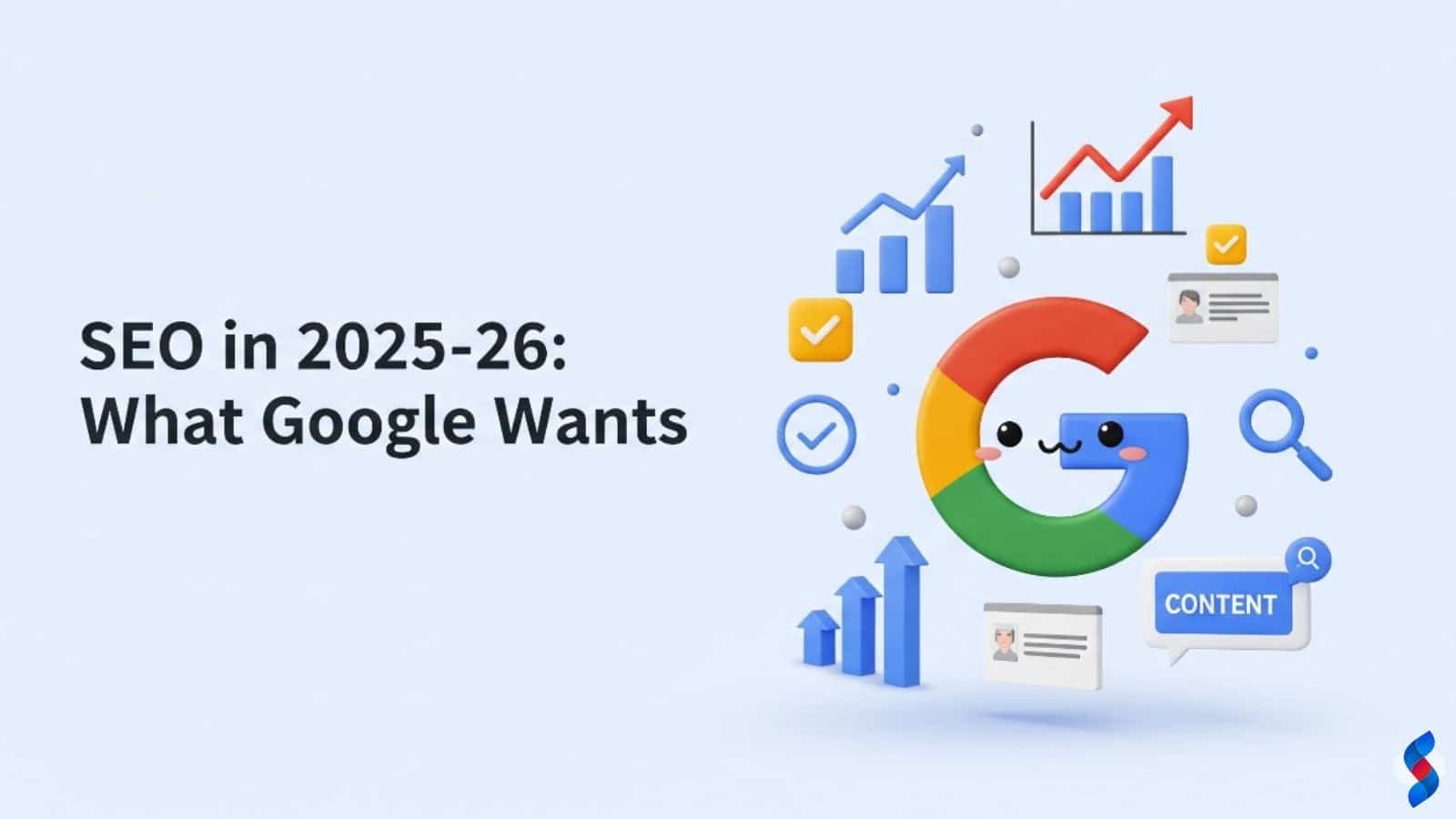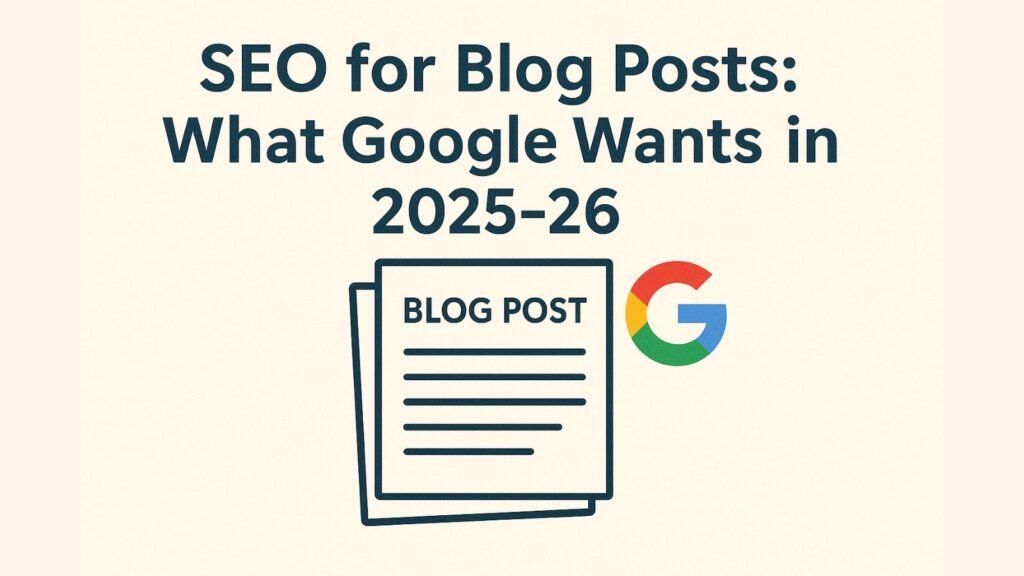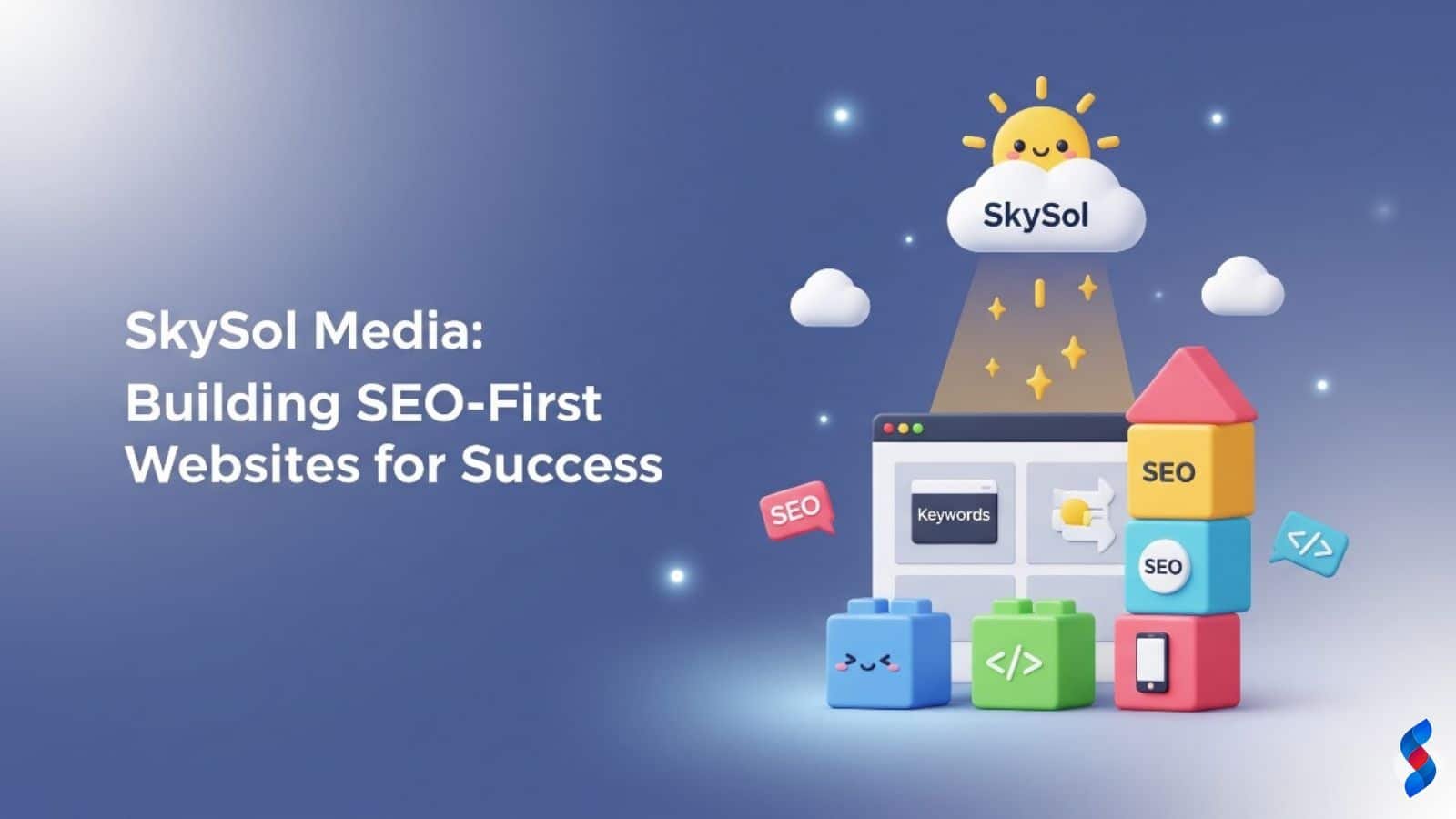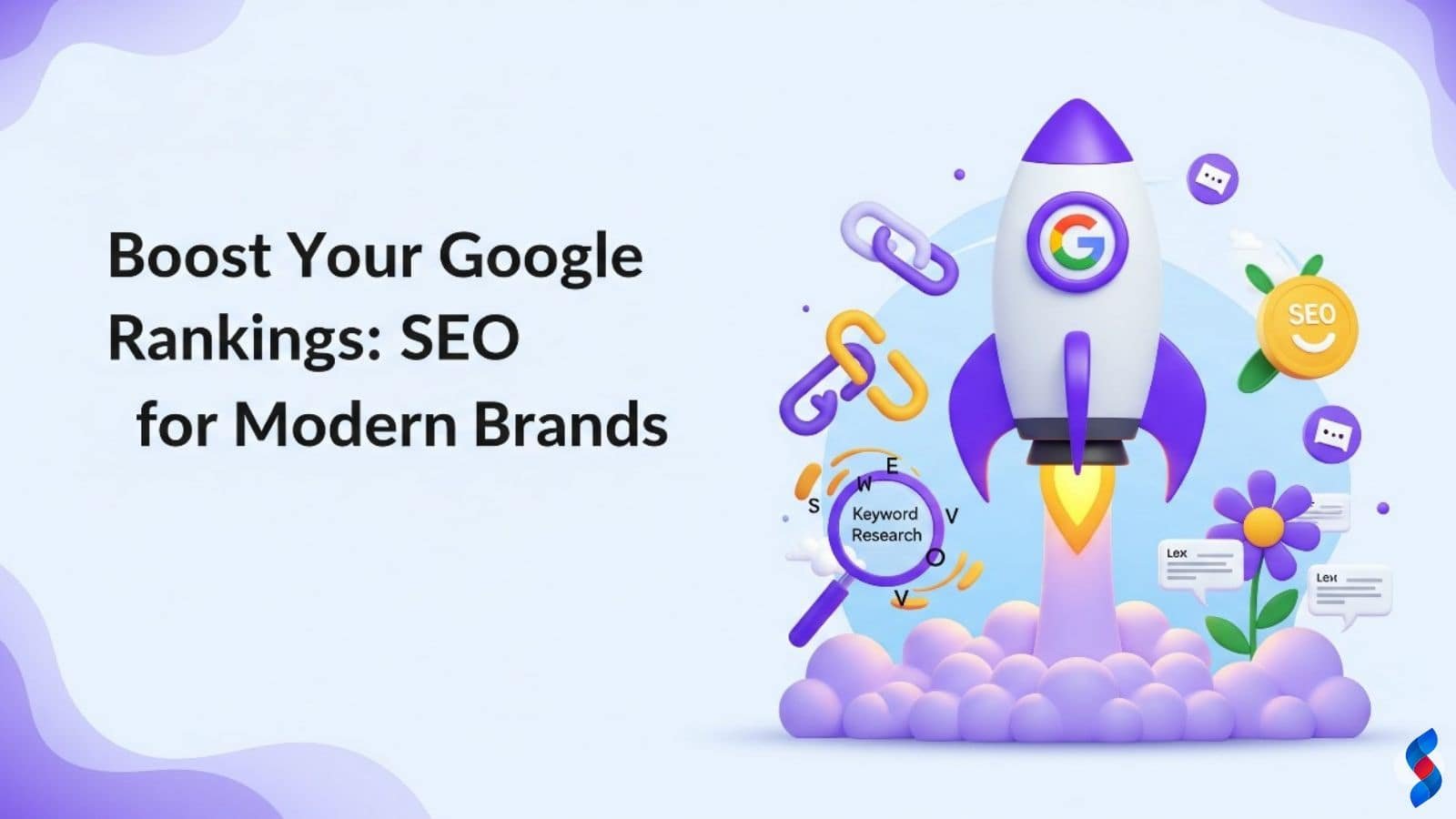Need help? Call us:
+92 320 1516 585
- Web Design And Development
- Graphic Designing
- Search Engine Optimization
- Web Hosting
- Digital Marketing
- CRO Services
- Brand Development
- Social Media Marketing
- PPC Marketing
- Content Marketing
- ERP Solutions
- App Development
- Game Development
- Printing Services
- Video Production
- Artificial Intelligence
- Data Entry
- Theme And Plugin Development
- Product Photography
- Software Development
- App Development
- Artificial Intelligence
- Brand Development
- Content Marketing
- CRO Services
- Custom Theme And Plugin Development
- Data Entry
- Digital Marketing
- ERP Solutions
- Game Development
- Graphics Designing
- PPC Marketing
- Printing Services
- Product Photography
- SEO
- Social Media Marketing
- Software Development
- Unique Category
- Video Production
- Web Design & Development
- Web Hosting
SEO for Blog Posts: What Google Wants in 2025-26
SEO for Blog Posts: What Google Wants in 2025-26: Search Engine Optimization (SEO) isn’t just a trend, it’s the foundation of digital visibility. As Google…

SEO for Blog Posts: What Google Wants in 2025-26: Search Engine Optimization (SEO) isn’t just a trend, it’s the foundation of digital visibility. As Google continues to refine its algorithms, the way we write and optimize blog content must evolve to meet these new expectations. At SkySol Media, we’re always ahead of the curve, blending technical excellence with ethical content marketing to ensure our blog posts not only rank high but also resonate with readers.
This guide explores what Google wants in blog posts in 2025–26, and how you can meet those standards to drive organic traffic, build authority, and improve online visibility.
Why Google’s Algorithm Is Evolving
Google’s mission is simple: deliver the most relevant, high-quality, and user-focused content for every search query. With advancements in AI, natural language processing, and user behavior tracking, Google’s 2025–26 algorithms focus more than ever on:
- Search intent over keywords
- Page experience over quantity of backlinks
- Authenticity and authority over clickbait
- Accessibility and structure over raw word count
This shift means businesses and content creators must think beyond keyword stuffing and start prioritizing real human engagement.
Read Also: How to Write SEO-Friendly Blog Posts That Google Loves
Key SEO Factors Google Cares About in 2025–26
At SkySol Media, we track Google’s updates closely. Here are the key elements your blog posts must focus on to remain competitive in the search rankings:
1. Intent-Based Keyword Optimization
While keywords are still important, user intent is the new king. Google wants to know:
- Are you answering the right questions?
- Are you providing complete, actionable information?
- Are you writing for users first, search engines second?
Tools We Recommend at SkySol Media:
- Google Search Console
- Ahrefs Keyword Explorer
- AnswerThePublic
- SEMrush Topic Research
2. Mobile-First and Page Experience
With over 70% of web traffic now coming from mobile devices, Google uses mobile-first indexing. That means your blog post must:
- Load in under 2.5 seconds
- Have mobile-friendly formatting (short paragraphs, touch-friendly elements)
- Avoid intrusive pop-ups
- Be HTTPS secure
3. E-E-A-T Content: Experience, Expertise, Authoritativeness, Trustworthiness
Google’s E-E-A-T framework is central to high-ranking content in 2025–26. It wants to see:
- Author bio that shows experience
- Citations from credible sources
- Accurate, fact-checked information
- User trust signals (testimonials, reviews, social proof)
At SkySol Media, we build trust by:
- Providing transparent authorship
- Referencing credible external sources
- Avoiding clickbait or exaggerated claims
4. Semantic Structure and Content Depth
Gone are the days of 300-word fluff posts. Google now favors comprehensive, semantically rich content.
How to structure your blog post for SEO:
- H1: Title with primary keyword
- H2: Clear section headings
- H3: Subsections for better clarity
- Use LSI (Latent Semantic Indexing) keywords naturally
- Cover related questions (use “People Also Ask” snippets as inspiration)
Target word count: 1000–2000 words, depending on the topic
5. Schema Markup and Rich Snippets
To stand out in SERPs (Search Engine Results Pages), implement schema markup such as:
- Article Schema
- FAQ Schema
- Author Schema
- HowTo Schema
This increases your chances of earning rich snippets, which boost CTR and provide instant answers.
At SkySol Media, we use Rank Math and Yoast SEO plugins to simplify schema implementation on WordPress.
6. Visual Content Optimization
Visuals are not just decorative—they’re integral to SEO:
- Use original images with descriptive alt text
- Embed infographics, charts, and videos
- Optimize image sizes for fast load times
- Leverage WebP format for better performance
7. Strategic Internal and External Linking
Google values how your blog fits into the broader web of knowledge:
- Internal linking helps Google crawl your site and increases session duration
- External linking shows you reference and respect high-authority sources
8. Zero-Click Search Optimization
Google increasingly delivers answers directly in SERPs, reducing clicks. To capture these:
- Write concise answers in 40–60 words
- Use bullet points, numbered lists
- Include definitions, comparisons, and FAQs

Responsible SEO: Our Promise at SkySol Media
We believe SEO is not just about algorithms—it’s about serving real people with quality content. That’s why we follow these responsible practices:
Human-Centered Content Creation
- No AI-generated spam
- No keyword-stuffed garbage
- We write for humans, not bots
Transparency & Authenticity
- Clear disclosures for affiliate content
- No false claims or shady backlinks
- Sources always cited
Accessibility & Inclusion
- Alt text for images
- Simple language for readability
- Multilingual options (where needed)
At SkySol Media, our ethical SEO approach builds long-term trust and sustainable rankings—not shortcuts that lead to penalties.
SEO Blog Post Checklist for 2025–26
Here’s our SkySol-approved checklist for your next blog post:
- Keyword targeting based on search intent
- Fast-loading, mobile-friendly layout
- Clear and semantic headings (H1–H3)
- High-quality, original content (1000+ words)
- Internal & external links
- Images with alt text
- Schema markup for articles & FAQs
- Meta title & description optimized
- Trust-building elements (author bio, sources)
Final Thoughts
SEO in 2025–26 is no longer about chasing hacks—it’s about delivering genuine value. Google is smarter than ever, and the brands that focus on clarity, credibility, and user satisfaction will be the ones who dominate the SERPs.
At SkySol Media, we’re here to help you create content that Google loves—and your audience trusts.
Don’t forget to share it
Table of Contents

We’ll Design & Develop a Professional Website Tailored to Your Brand
Enjoy this post? Join our newsletter
Newsletter
Related Articles
The Ultimate SEO Guide for Growing Your Trading Business Online
Drive More Organic Traffic to Your Trading Platform with These Proven Tactics
Optimized for Success: How SkySol Media Builds SEO-First Websites
Boost Your Google Rankings: Proven SEO Tactics for Modern Brands
How to Write SEO-Friendly Blog Posts That Google Loves
This website uses cookies to improve your experience.
By using this website you agree to our Privacy Policy.






